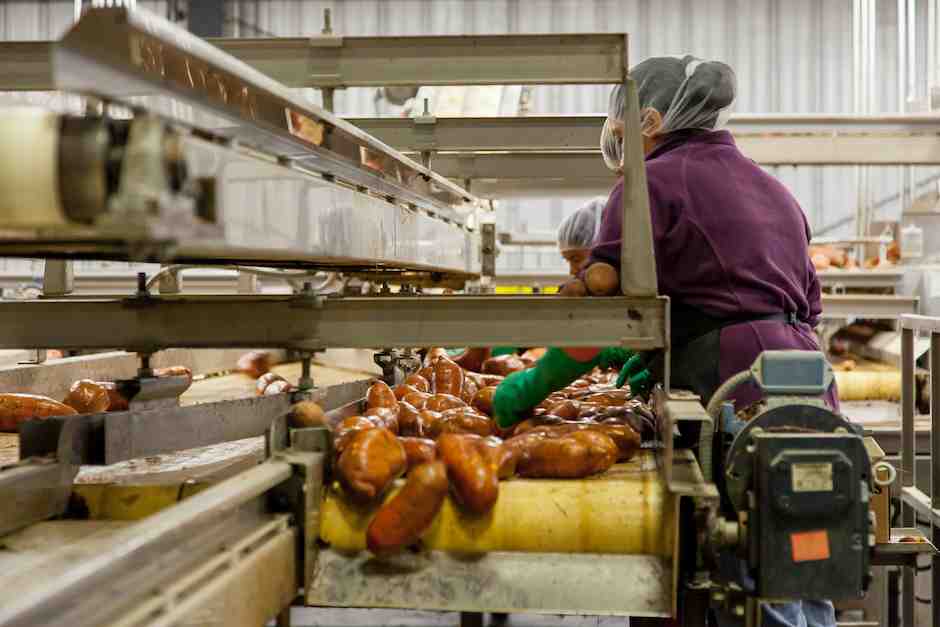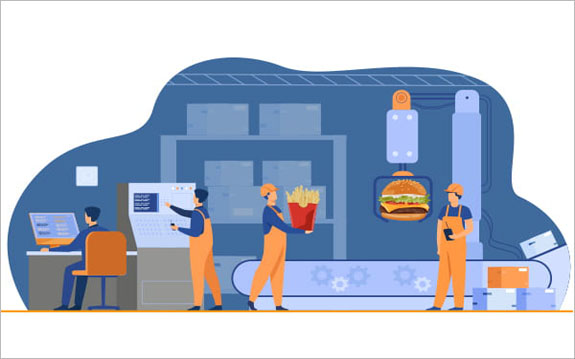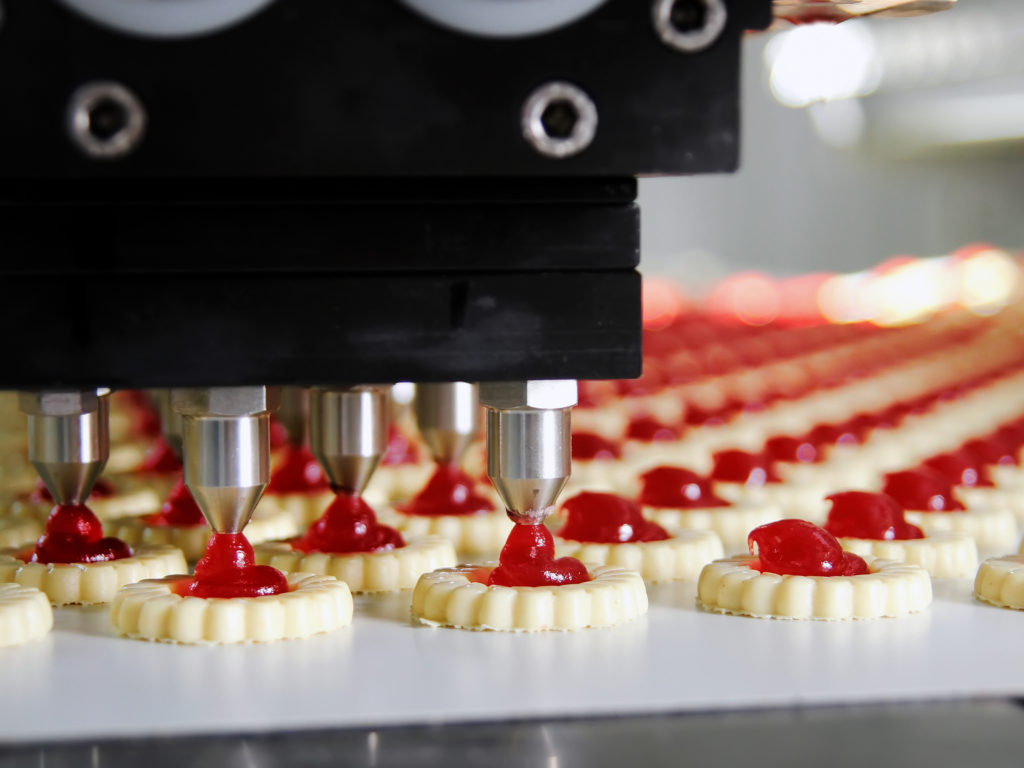Automating in the food industry
Automating in the food industry. As the fourth industrial revolution takes, a grip there has been a steady rise in manufacturing companies pushing to streamline themselves by introducing modern manufacturing techniques and practices into their production lines. Not every industry has been so successful and some industries, in particular, have struggled to advance as quickly as others to improve their performance and output.
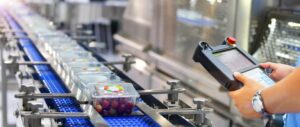
One of these is the UK food industry. With lower margins, food manufacturers have to consider tighter timescales for payback, along with increased flexibility. This makes full automation and high capital investments difficult to swallow and in some cases an impossibility to automate production processes.
SO WHAT INFLUENCES THE COSTS?
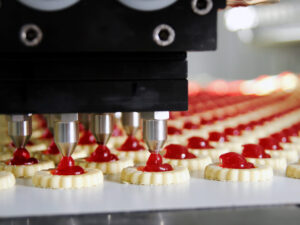
Food environments require extremely high levels of cleanliness and high quality control, therefore the equipment used has to withstand wash-downs, chemical and steam cleaning. Even from a construction point of view, the machine frame is required to be manufactured using a suitable grade of stainless steel, constructed to ensure a minimum amount of flat or resting areas for food debris to rest during production.
In addition, the control hardware used in these production machines, such as motors, control cabinets, HMI control interfaces, all need to be of a standard to withstand cold and damp environments that also need to be of wash down quality. The downside of this is the increased cost due to the higher level of IP (Ingress Protection) rating to ensure these devices are suitable for such hazourdous conditions.
Raw foods such as poultry, meat and fish can be difficult to handle due to being organic with no two pieces being the same. This again can require the equipment used to be a much higher specification than normal and therefore come at an increased cost.
A common task in the food industry is cutting and slicing. Millions of sliced and diced food products, such as salmon, ham, chicken, etc. are purchased every year. This task can, on the face of it, be simple, however, doing this for high volume processing can prove difficult. Chicken fillets can be different sizes and density when cooked or uncooked, even by adding flavouring can change the characteristics and therefore the cutting and slicing process becomes ever more complex as the variants increase. There are however solutions that have been developed or in the process of being developed.
OPTIMISING PACKAGING TO SUIT AUTOMATION
Secondary automation applications within the food industry have become a little less complicated but can still have some issues. Bringing packaging into the manufacturing process requires systems that can feed cartons and trays for the food to be inserted into. Normally these applications require high and reliable feed rates to ensure a constant supply of packaging for the process.
Shelf space within supermarkets costs money and therefore the final packaging needs to be as compact as possible, whilst being able to “hold” as much product as possible. Part of the problem this causes from an automation suppliers point of view is that the packaging, although beneficial to the end-user, i.e. supermarkets, it can add many complications. This can add a lot of additional equipment to ensure the product is orientated correctly to suit the supermarket’s requirements. This is where food manufacturers, supermarkets and machine builders have to work together to align the requirements. Although the best compact packaging and shelf-ready boxes may suit the end consumer, there is no reason why the food product shapes cannot be changed slightly to allow for simpler automation and compact packaging.
AUTOMATING TO IMPROVE FOOD SAFETY
Although we have been looking at what influences the cost of automation in the food industry, let us look at this from another point of view and asking how much will it cost if manufacturers do not.
Manual handling of products can in itself create risks from contamination, loss of concentration and mistakes can be made. With even the best standard operating instructions in place, there is always the possibility that hair, nails or other materials can end up in the product. Therefore, not only potentially creating a health risk to the end consumer but also damaging the manufactures brand quality and reputation, causing an expensive product recall process.
SO DOES THIS MEAN AUTOMATION IS TOO EXPENSIVE FOR THE FOOD INDUSTRY?
The answer is no and the good news is, that there are plenty of food processing companies within the UK embracing automation. The key here is for the food industry leaders to look at adopting new technologies and use them where they are required. This may involve developing new processes to suit exactly what they require. Working closely with automation companies and packaging experts can simplify the end solution.
The initial outlay does not have to be expensive and the end result will give the ability to automate a process that would otherwise have to be done manually and in some cases unsafely. As another example, technology is advancing faster than ever before. AI (Artificial intelligence) is now providing machine builders with the ability to use clever algorithms to ensure data taken from ingredients and other processes such as cooking times are used to then optimise cutting, forming and other processes.
Over the last 4 decades, SP Technology has been developing bespoke automated solutions not only for the food industry but also for medical device, pharmaceutical, automotive and bio-med to name but a few.
The reason for our long-term success is partially down to not accepting the status quo and collaborating with many technology partners to ensure the latest technology is used to solve problems without creating complexity. Regardless of the investment in automation, we encourage food producers looking at automating in the food industry to embrace the benefits of automation and automated systems in the 20th century and get in touch with any queries.

